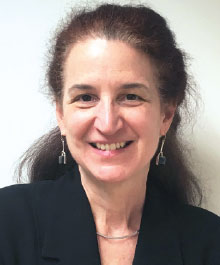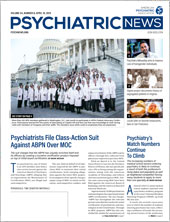Adolescents are nearly twice as likely to misuse prescription opioids if their parents—particularly their mothers—do so, according to a study published in the March Pediatrics.
The study analyzed data from the National Survey on Drug Use and Health from 2004 to 2012 and included 35,000 parents—two-thirds of whom were mothers—who had an adolescent living in their household. The role of the family in adolescent misuse of opioids has been previously inferred from the finding that one-third of youth report that a family member was the source of their prescription opioids, said Pamela C. Griesler, Ph.D., an assistant professor of clinical psychology in the Department of Psychiatry at Columbia University Vagelos College of Physicians and Surgeons and research scientist at the New York State Psychiatric Institute, and colleagues.
As part of the survey, parents and adolescents were asked if they had ever used one of 21 prescription opioids without a doctor’s prescription or if they took the drug only for the experience or feeling it caused. They were also asked about lifetime depressive episodes and their use of cigarettes, alcohol, or other drugs. Adolescents were questioned about past-12-month delinquency, religiosity, and the quality of their relationships with their parents.
Researchers found that about 14 percent of parents had ever misused a prescription opioid; white parents reported higher rates of use (16 percent) than African-American parents (10 percent) and Hispanic parents (9 percent). About 9 percent of adolescents reported opioid misuse, with boys and girls as well as children from various races and ethnic backgrounds all reporting similar rates of misuse. Misuse increased with age—from 4 percent among 12-year-olds to 15 percent among 17-year-olds.
Nearly 14 percent of adolescents had misused opioids in their lifetime when a parent had also done so, compared with 8 percent when a parent had not. When the researchers controlled for other factors (such as other drug use or adolescent depression, delinquency, and perceptions of peer use), the association persisted, with adolescents still 30 percent more likely to misuse opioids if a parent had done so. Race and sex were not significant factors in parent-child use.
However, only opioid misuse by mothers was significantly associated with that of their adolescents. “We were not surprised by the findings,” Griesler said. “The finding that mothers’ nonmedical prescription opioid use was associated with adolescent use while fathers’ use was not has been reported for other substances, particularly cigarette smoking. This could be explained by differential exposure to and role modeling of mothers’ and fathers’ drug use behavior and socialization practices.”
The researchers identified several other parental factors associated with adolescents’ misuse of prescription opioids, including smoking, high levels of parent-adolescent conflict, and lax monitoring of their children. “For example, adolescents whose parents did not set limits regarding time spent with peers, with television, and who did not check on homework were more likely to use nonmedical prescription opioids,” Griesler explained.
Adolescents were more likely to misuse opioids if they smoked cigarettes, used marijuana, were depressed, or perceived that most of their classmates used drugs. Parents’ self-reported belief that drug use was “risky” was associated with slightly lower adolescent opioid misuse. Similarly, adolescents who believed drug use was dangerous or who were religious were slightly less likely to misuse prescription opioids.
“Based on the study findings, reducing parental nonmedical prescription opioid use; promoting positive parenting practices, such as monitoring and reducing conflict; treating adolescent mental health problems; and strengthening adolescents’ negative beliefs about drug use are key prevention targets,” Griesler said. The study was funded by the National Institutes of Health. ■
“Nonmedical Prescription Opioid Use by Parents and Adolescents in the U.S.” can be accessed
here.

